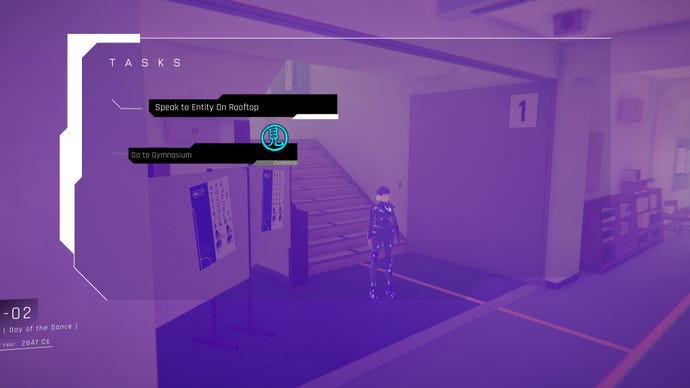HomeFeatures1000xResist
And also, a work of experimental theatre
Image credit:Fellow Traveller
Image credit:Fellow Traveller

1000xRESIST Release Date TrailerWatch on YouTube
1000xRESIST Release Date Trailer

These memory sequences, or Communions, form the game’s 10 chapters, which are spread across centuries and feature different generations of characters. But there’s a twist: you learn early on in the story that the ALLMOTHER has been lying to you. Your job as Watcher accordingly shifts from piously chronicling the ALLMOTHER’s endeavours to the role of detective, unearthing blasphemous truths hidden in your progenitor’s recollections. In the parts of the game I’ve played -there’s a demo on Steam- this translates to roaming half-tangible, starkly coloured locations that are viewed from fixed perspectives, switching between timeframes to make connections between certain events and complete environmental puzzles. Each Communion has its themed mechanics: at one point in my demo, I had to ghost between hovering points of energy in a vertiginous, abstract representation of a high school classroom.
It reminds me a little of synchronising with the Animus to unlock the map in Assassin’s Creed, which is not cited on the Steam page as an influence. Here are some artworks that are:NieR: Automataand Yoko Taro’s games at large, Satoshi Kon’s film Perfect Blue, Naoka Yamada’a A Silent Voice, and Robert Wilson’s play Einstein On The Beach. When I catch up with Remy Siu, creative director and founder of sunset visitor, he adds a couple more to the pile:Star TrekDeep Space Nine episodes ‘The Visitor’, in which Commander Sisko is trapped outside of time, watching his son grow old, and ‘Far Beyond The Stars’, in which Sisko is somehow reborn as a science fiction writer in 1950s America.
To put that in my own words, the game explores the formation of a society based on the feeling of living between societies and their timelines. “It’s taking that internal struggle for that character, and her wrestling with her own identity, and then having that strangely play out on a societal level, in the future,” Siu says. He doesn’t clarify whether the character in question is the ALLMOTHER, or some other figure from her past.
Image credit:Fellow Traveller

As with its articulation of immigrant trauma across generations, the game spins those feelings out across centuries, asking what “weird societies would form in these kinds of strange scenarios”. When you as the Watcher revisit the ALLMOTHER’s past in our present day, this reflects Siu’s surprise - palpable even during our conversation - that the beginning of the Covid pandemic was half a decade ago. The lives of the ALLMOTHER’s clones, trapped in their far-future bunker, are a more direct representation of lockdown claustrophobia.
Developing a videogame allows sunset visitor to do things “that would be impossible for theatre - or at least for the kind of resources that we had, even before the pandemic,” Sui continues. “We got to do things like tell the story over a chronology that lasts about 1000 years. That’s something that’s really hard to do in theatre or film, even.” But lest this become a pean to videogame exceptionalism, 1000xResist can just as easily be interpreted as a work of experimental theatre. Take the game’s posed and stylised character performances, which reflect writer Natalie Tin Yin Gan’s background in choreography and dance, or the use of colour and lighting to split timeframe from timeframe, which builds on Sui’s work for the stage.
Image credit:Fellow Traveller

“We’re trying to tell you a lot with just light,” he says. “I think that will continue through the game. And it was helpful because like, it has been a challenge with the time-shifting - you want to communicate to the player that yeah, there’s some difference, but it’s the same space.” Siu notes of the game’s sci-fi influences that ‘time travel’ isn’t just a feat or technology within a story - transporting the reader through time is the definition of narrative. “It’s not just a literal thing that happens, it’s a storytelling mechanic. Merging those together allowed us to kind of do more, and explore different things thematically.” Perhaps that’s what this “tapestry” is about, once you lean back from the threads - it’s a story about how stories are paced, interrogated, broken and retold as we bring a range of complex and difficult life experiences to bear.